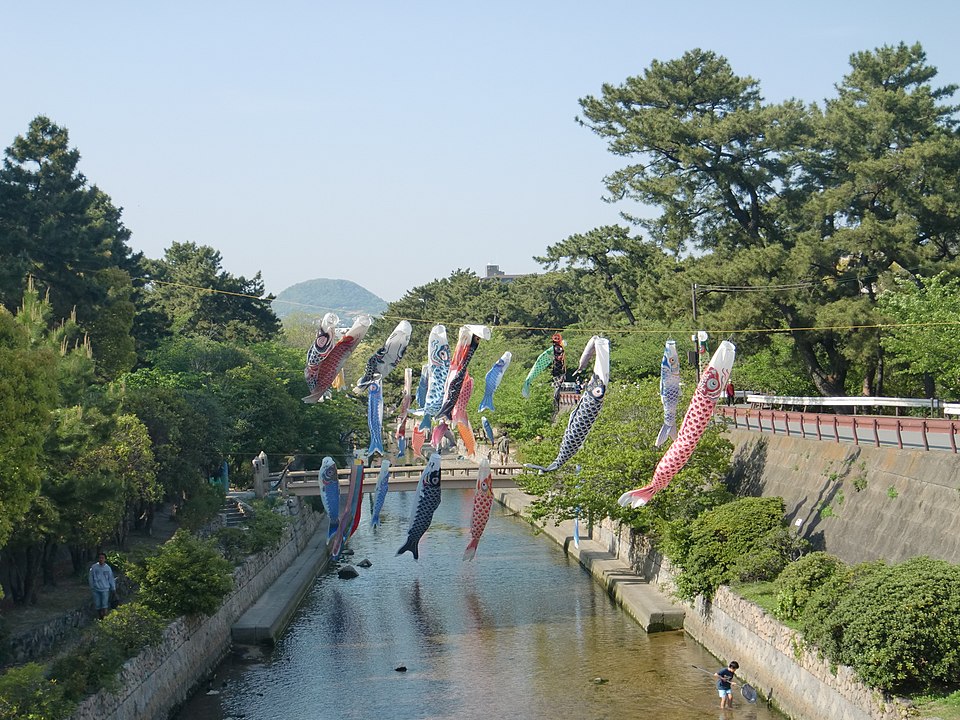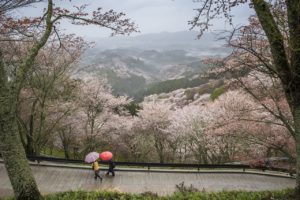Japan’s Golden Week: ゴールデンウィークGōruden Wīku
Golden Week, orゴールデンウィーク, Gōruden Wīku, is one of Japan’s most celebrated holiday periods, taking place between April 29 and May 5 each year. It’s a cluster of national holidays that offer many Japanese people a rare chance to take a full week off work or school. Golden Week is a period of travel, festivals, and family time. It marks the beginning of warmer weather and the height of springtime in Japan.
What Holidays Make Up Japan’s Golden Week?
Golden Week is composed of four 祝日 shukujitsu (national holidays), each with cultural and historical significance:
- 昭和の日 Shōwa no Hi – Shōwa Day (April 29)
This day honors Emperor Shōwa (Hirohito), who reigned from 1926–1989. It encourages reflection on the Shōwa era and Japan’s postwar recovery. - 憲法記念日 Kenpō Kinenbi – Constitution Memorial Day (May 3)
Commemorates the promulgation of the postwar constitution in 1947. It’s a day to reflect on democracy and governance in modern Japan. - みどりの日 Midori no Hi – Greenery Day (May 4)
A day to appreciate nature and the environment, reflecting Emperor Shōwa’s fondness for nature. People often visit parks or go hiking. - こどもの日 Kodomo no Hi – Children’s Day (May 5)
Celebrates the health and happiness of all children. Traditionally known as 端午の節句 Tango no Sekku, it was once mainly for boys, while 雛祭りHinamatsuri on March 3 was for girls. On this day, families raise 鯉のぼり koinobori (koi fish streamers) and display 兜 kabuto (samurai helmets) or 武者人形 musha ningyō (warrior dolls) to wish strength and success for their children.
If one of these holidays falls on a Sunday, a 振替休日 furikae kyūjitsu (substitute holiday) is observed on the next weekday, sometimes extending the break even further.
Travel and Leisure During Japan’s Golden Week
Golden Week is one of the busiest 旅行シーズン ryokō shīzun (travel seasons). Millions of people travel domestically and internationally, making highways, airports, and train stations extremely crowded. Cities like Kyoto, Osaka, and Tokyo, as well as scenic areas like Okinawa or Hakone, are popular destinations.
Hotel prices rise, reservations book up months in advance, and 新幹線 shinkansen (bullet trains) often operate at full capacity. Those staying closer to home may enjoy local 祭りmatsuri (festivals), ピクニック pikunikku (picnics), and time with family.
Cultural Highlights
Japan’s Golden Week is also a time for cultural events and spring festivals. For instance:
- In Osaka, the 高槻ジャズストリート Takatsuki jazusutorīto (Takatsuki Jazz Street) features hundreds of free jazz performances throughout the city.
- Families participate in outdoor events like バーベキュー bābekyū (barbecues) and visit 植物園 shokubutsuen (botanical gardens).
Also, during こどもの日 Kodomo no Hi (Children’s Day), colorful koinobori fly from balconies and gardens. Each koi fish represents a family member: black for the father, red or pink for the mother, and smaller ones for each child.
You may be wondering if Golden Week is a good time for 花見 hanami (cherry blossom viewing). In most of the country, Golden Week falls after the best season for 桜 sakura (cherry blossoms), although if you’re in the north of Japan you may be able to catch some.
Golden Week provides a special look into Japanese culture. It combines tradition, relaxation, and celebration. Whether you’re flying koinobori with family or enjoying green tea under blooming trees, it’s a memorable time of year that showcases the joy of spring in Japan.
- ゴールデンウィークを楽しんでください!
Gōruden Wīku o tanoshinde kudasai!
Happy Golden Week!
Get on the road to speaking Japanese with the Language Garage!
We hope you’ve enjoyed learning about Japan’s Golden Week. If you’d like to learn more:
- Follow us on Facebook, LinkedIn, BlueSky, Twitter, Threads, Instagram, or Pinterest. We publish lots of Japanese vocabulary, grammar, and culture notes, so it’s a great way to pick up some new vocabulary and practice.
- Check out our other posts on Japanese language, culture, and more.
- Enroll in affordable, flexible, and personalized private online Japanese lessons or sign up for a small group online Japanese class.
- Create a free Language Garage account to access tons of Japanese vocabulary, grammar, and culture.






